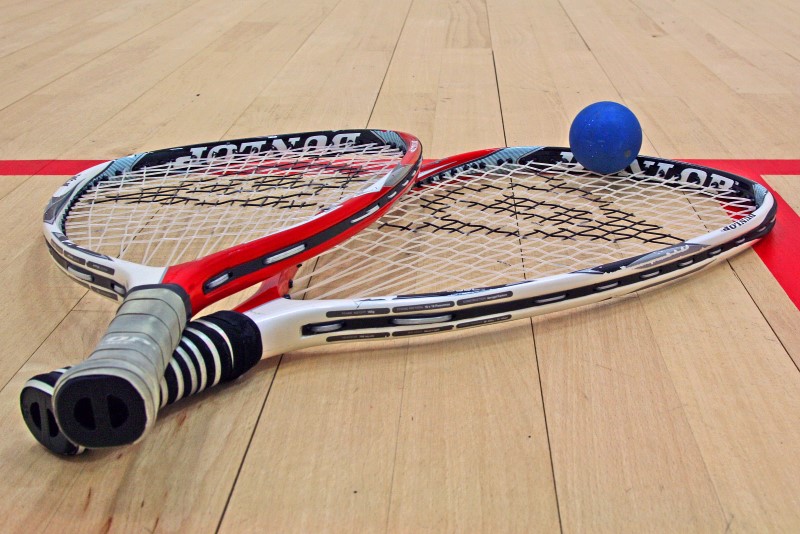As the temperatures start dipping, many people turn indoors for their fitness and recreation. One way to get a great workout indoors is by playing racquetball, which is a sport that about 5.3 million US citizens play every year.1 As anyone who has played racquetball knows, it can be a sport that provides a great cardiovascular workout in a competitive manner. With any participation in a sport, however, comes the risk of injury, especially if you are not conditioned well going into it. Having the right equipment and knowledge before getting onto the racquetball court may be beneficial to make sure you are ready for this winter-friendly sport.
There are certain equipment measures you can take in regards to preventing an injury in racquetball, such as wearing protective eyewear, having appropriate racquetball shoes, and of course having an appropriately-sized and well-maintained racquet.1,2 Other things to consider are the technique of your swing as well as making sure you are appropriately warming-up and cooling-down before and after you play.1,2 I’m no racquetball aficionado, so I’ll leave the technique aspect of this sport to the experts.
However, as a physical therapist, I have a lot of experience dealing with overuse injuries and discussing ways to prevent them from happening in a racquet sport. One of the most common racquetball injuries is lateral epicondylalgia, otherwise known as “tennis elbow”2. Even though there are differences between racquetball and tennis, the mechanism of injury is hypothetically the same. One of the more common theories of the cause for lateral epicondylalgida is that if the size of racquet handle is too small or too big, your wrist extensor muscles that attach (via tendons) to the outside of your elbow can end up being overstressed, causing physiological issues which can lead toward this common type of pain.2 Making sure you have the appropriate sized handle is an easy way to prevent injury in this sport. Also, one of the more common causes of tennis elbow has been reported to be using a one-handed backhand swing as well as having an excessive wrist snap during your swing.2 To prevent irritation of these tendons, a two-handed backhand is recommended, as well as avoiding too much flexion of your wrist while you are swinging the racquet.2
Another important aspect of preventing lateral epicondylalgia because of overuse is to look up the chain to the shoulder and make sure that you have adequate flexibility and strength of the muscles there, especially in the rotator cuff.1,2 A good physical therapist will want to evaluate your shoulder as well as your neck when you come in with elbow pain. But why look at those joints if they don’t hurt? Because, the shoulder and neck can oftentimes be the true sources of the problem that caused your elbow to hurt in the first place, so it’s always worth a look to rule them in or out as a part of the whole picture.
Whether you are already an avid racquetball player with or without pain, or you are thinking about picking up racquetball as a way to stay fit indoors this winter, call us a Rakita Tomsic Physical Therapy to schedule an evaluation to assess your readiness to start this high intensity sport or troubleshoot ways to decrease any aches and pains you may currently be experiencing.
- Mitchell T. What a racquet! Racquet sports injury prevention. Working Well. https://www.working-well.org/articles/pdf/tennis.pdf, Accessed November 20, 2014.
- Mitchell T. What a racquet! Racquet sports injury and treatment. Working Well. https://www.working-well.org/articles/pdf/tennis_2.pdf, Accessed November 20, 2014.

